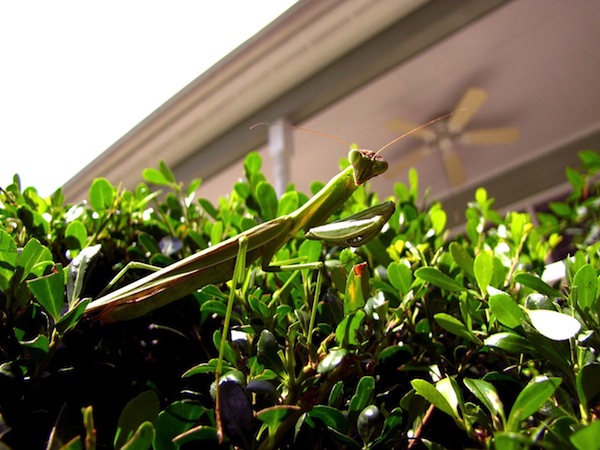If anything, we have the tendency to view the South, those parts of the States below the Mason Dixon line, as anti-science. A war is on throughout much of the deep South, from Louisiana to Virginia, on whether evolution should be taught in the classroom. The North Carolina house and senate have repeatedly ignored science on a range of topics including sea level rise and abortion. Is the South anti-science? Many of my scientist colleagues think so. One friend, in response to whether he applied for science faculty positions in the South, just laughed at me.
But the South I love is based on science. The chemistry of baking and the evolution of nut trees, yields the sweet glory of a pecan pie. The perfume of Magnolia blossoms in the summer echoes a 20 million year history of plants attracting pollinators. The sandy coastal soils of North Carolina produce vast pine forests yielding tar, pitch, and turpentine and the inevitable nickname of Tarheels. As I sip on my bourbon on the back porch watching the lightening bugs before a late spring shower rolls in, I am overcome with magic, no the science, of all that is Southern.

A slice of Southern Heaven at Mama Dip’s in Chapel Hill. How has the chemistry of pie making, the biology of the pecan tree (Carya illinoinensis), and the carbohydrate demands of Southerners produced such excellence?
Examples from my continued The Science Of The South series (and hopefully a forth coming book):
A fifty million year old evolutionary fish tale unfolds to produce better fishermen and bigger catfish. @Mental Floss
Near the Arkansas-Oklahoma border where I’m from, we call this noodling. In the Carolinas, the term is hand grabbling. Either way, it ends in a Greco-Roman grappling match where noodlers across the South, like Lincoln, wrestle very large catfish from their underwater holes. But this fishing story started long before Lincoln Sadler began his pilgrimage to Great Rock that August morning.
How presidential elections are impacted by a 100 million year old coastline @Deep-Sea News
Hale County in west central Alabama and Bamberg County in southern South Carolina are 450 miles apart. Both counties have a population of 16,000 of which around 60% are African American. The median households and per capita incomes are well below their respective state’s median, in Hale nearly $10,000 less. Both were named after confederate officers–Stephen Fowler Hale and Francis Marion Bamberg. And although Hale’s county seat is the self-proclaimed Catfish Capitol, pulling catfish out of the Edisto River in Bamberg County is a favorite past time. These two counties share another unique feature. Amidst a blanket of Republican red both Hale and Bamberg voted primarily Democratic in the 2000, 2004, and again in the 2008 presidential elections. Indeed, Hale and Bamberg belong to a belt of counties cutting through the deep south–Mississippi, Alabama, Georgia, South Carolina, and North Carolina–that have voted over 50% Democratic in recent presidential elections. Why? A 100 million year old coastline.
The intense steamy heat, so taxing for me, is a dream for another wayward soul–the cockroach. @Scientific American
The sticky Southern summer heat makes me slightly insane. It’s an agitation that grows deep within me as the season ripens, and the humidity and temperature rise in equal fashion. This heat has been both a blessing and a curse throughout my life. The giver of swims in the local creek and refreshing mint juleps is also the giver of 20-pound sweat drenched t-shirts and late summer landscapes browned and brittle as death itself. As Mrs. Pearson states it’s a “pregnant heat.” No doubt ready to burst forth with “lost dreams and wayward souls.”
This intense steamy heat, so taxing for me, is a dream for another wayward soul–the cockroach. In North Carolina a single home can host an alarming variety of these heat-seeking insects. Brown-banded, German, American, Smokybrown, and Oriental—these enterprising pests with intercontinental names will turn any warm inviting home into a United Nations of roaches. It’s a terrifying thought—notoriously indestructible vermin that feed off hot, humid misery.

The invasive Chinese Mantis (Tenodera sinensis) introduced to the U.S. around the Civil War to control other insects
